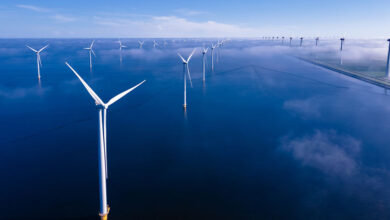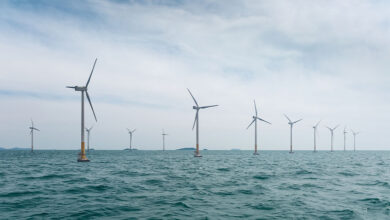Investing in water
 A summary of the Water Services Investment Programme for 2010-2012.
A summary of the Water Services Investment Programme for 2010-2012.
Three hundred and forty new contracts, worth €1.8 billion, along with €1 billion of work under way, are to be delivered by the Government’s Water Services Investment Programme over the next two years.
The programme was launched in April 2010 and follows on from a €5.5 billion investment into the sector from 2000 onwards. Maria Graham, from the Department of the Environment, Heritage and Local Government, outlined the programme at the Environment Ireland conference.
Two-thirds of the previous programme was invested in waste water treatment and networks. That proportion falls to 56 per cent over the next two years as several requirements for waste water have been met and the department will put more emphasis on water conservation and quality.
A total of 480 major water and waste water schemes were completed over 2000-2009 through the previous programme, the Rural Water Programme and work by individual water service authorities. Compliance with the Urban Waste Water Treatment Directive has increased dramatically from 25 to 92 per cent.
Despite that progress, “considerable infrastructure deficits” remained. Environmental compliance requirements continue to grow, planning must take place for future growth and, on average, 40 per cent of supplied water is “unaccounted for” through leaks.
The changed economic situation means that public finance is constrained and value for money, “key at all times”, has become more important.
After consultation with city and county managers, the department decided to review all existing schemes that were “not sufficiently advanced” and make water conservation a priority “equal if not above every other type of capital investment within the programme”.
A stronger strategic overview and regional perspective was also needed, and the new programme was therefore organised along the seven river basin districts covering the state. These had been established to meet the Water Framework Directive, which aims to achieve “good status” in all natural waters by 2015.
The programme’s priorities were partly framed by Forfás assessments of towns which would have water deficiencies by 2013 and 2018, the December 2008 Smart Economy report and the National Spatial Strategy. Water service authority assessments of projects for their progress were subsequently evaluated by the department.
Most local authorities have completed the first two stages of the water conservation programme i.e. water management systems (to monitor use and loss) and active leakage control (finding and fixing leaks). The third phase, replacing defective supply networks, received a €321 million allocation.
The programme’s approach has been endorsed in the 2010-2016 Infrastructure Investment Priorities, which allocates €3.47 billion for water services. The report emphasises that this investment can satisfy demand in critical areas for industrial and commercial development and therefore aid the economic recovery.
Looking ahead, it was critical to get the scale of a project right. Water infrastructure investments have high whole-life costs. Several projects, with similar compliance requirements or geographic locations, could be bundled into the same contract.
Shared services, envisaged by the local government efficiency review, are already taking place in water e.g. Dublin City Council takes the lead on water conservation for the four County Dublin councils. Performance measurement would also become increasingly important and the introduction of domestic water charges “may change the dynamic” as the investment programme gets under way.





